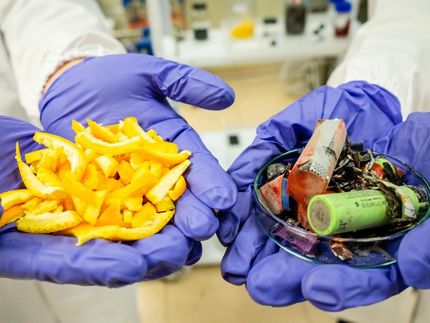New technology expands ability to recycle precious metals
Strategic partnership between Heraeus and PhosphonicS
precious metals like platinum and rhodium are very valuable, and also very rare. That makes it increasingly important to recycle these precious metals from a wide variety of industrial uses. For example, various catalytic processes in the chemical industry generate large amounts of fluid residue containing low concentrations of precious metal catalysts.
The new adsorption process (scavenger technology) being offered in cooperation with the PhosphonicS company in the UK will allow Heraeus to reprocess waste solutions that contain even low concentrations of precious metals. Up until now, it simply was not affordable or profitable to recycle them.
“This strategic partnership is another building block for us to offer our customers a broader range of precious metal recycling,” notes Dr. Joachim Kralik, Head of Chemical Process Development Recycling in the Heraeus Precious Metals Business Unit. Heraeus brings to the partnership its wide-ranging expertise with precious metals and many years of experience in recycling materials containing precious metals—especially from industrial catalysts. This cooperation means that Heraeus customers from the pharmaceutical, industrial, and specialty chemical industries will be able to optimize their processes, both ecologically and economically.
Together with PhosphonicS, Heraeus offers a wide range of a new generation of select and efficient adsorption agents—called scavengers—to remove and recover precious metals from chemical products and waste solutions. Since this can accomplish precious metal output levels for process solutions in the single-digit ppm range (ppm = parts per million), even the slightest amounts of precious metal are retained and reused in the precious metals cycle, saving both resources and the environment.
New adsorption technology works like a “chemical magnet”
The scavenger process allows the efficient recovery, even for waste solutions with extremely low concentrations of precious metals. “With this process, it’s almost like we’re pulling finely distributed precious metal residue from the solution with a ‘chemical magnet.’ The precious metal is bound to the surface of the adsorption medium. We can reprocess that material with its valuable content using wet-chemical processes in a way that yields pure precious metal,” explains Dr. Kralik in simple terms.
In principle, the scavenger process can be used for all precious metals. This technology has already been successfully employed for heavily-diluted organic platinum and rhodium solutions from homogeneous catalytic processes from the chemical industry. Rhodium is principally needed for catalytic converters for the automotive industry, but also finds widespread application in the chemical industry because of its outstanding catalytic properties. Homogeneous catalytic processes using rhodium play an important role in the production of special chemicals (plasticizers, acetic acid, acetic anhydride, and pharmaceutical agents). Platinum catalysts are important for silicone production.
Most read news
Organizations
Other news from the department research and development

Get the chemical industry in your inbox
By submitting this form you agree that LUMITOS AG will send you the newsletter(s) selected above by email. Your data will not be passed on to third parties. Your data will be stored and processed in accordance with our data protection regulations. LUMITOS may contact you by email for the purpose of advertising or market and opinion surveys. You can revoke your consent at any time without giving reasons to LUMITOS AG, Ernst-Augustin-Str. 2, 12489 Berlin, Germany or by e-mail at revoke@lumitos.com with effect for the future. In addition, each email contains a link to unsubscribe from the corresponding newsletter.



























































